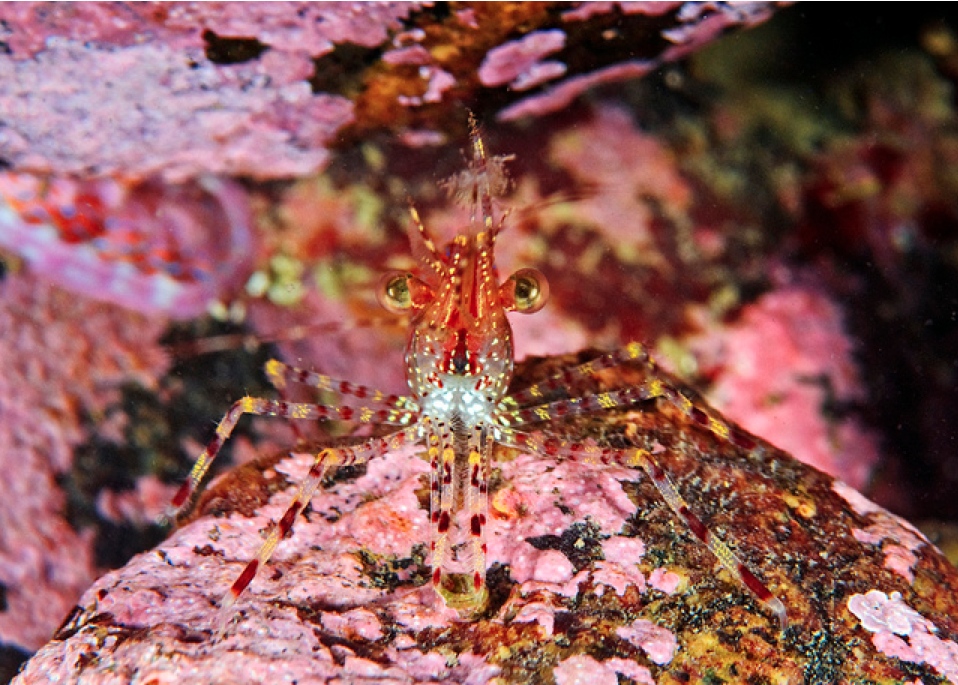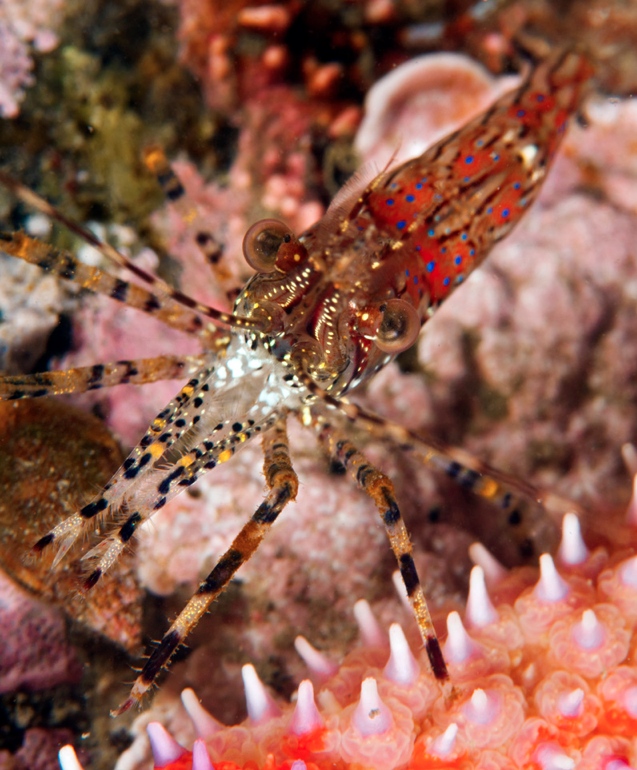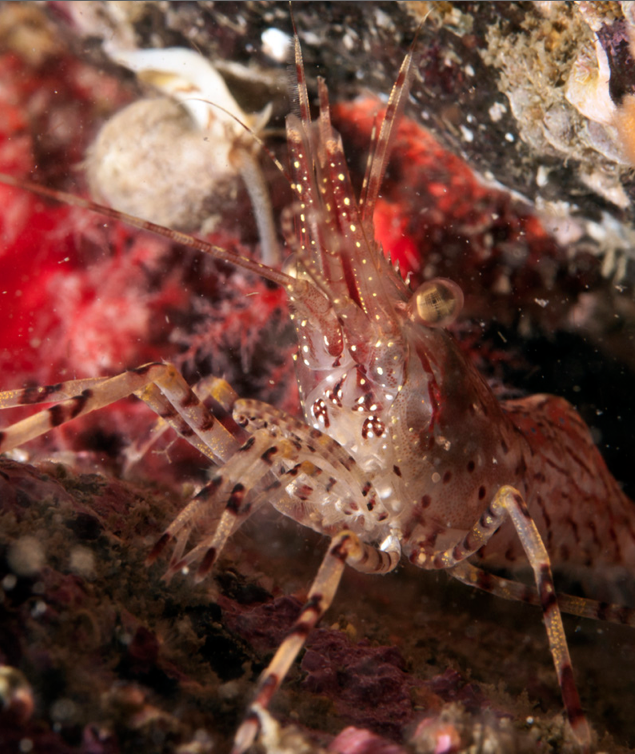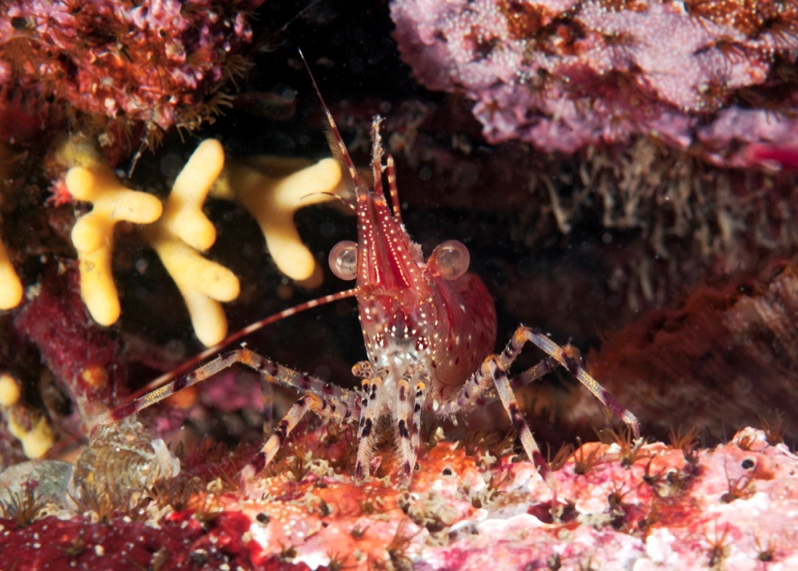
Ryan Murphy took the pictures on this page and followed up in getting the identifications sorted out between this shrimp and Pandalus stenoplepsis and verification from Greg Jensen of the University of Washigton.
GENERAL DESCRIPTION
The coonstripe shrimp has large eyes, a thick shell and a surface finely pitted. The color of the shrimp is transparent, milky, and has irregular stripes and spots of chocolate brown all over the body, including its antennae. The antennae are long and heavily banded. Total length of the male shrimps can become about 123mm and the females about 140mm.
HABITAT
As one of the common names suggests, the dock shrimp is often living on or by wooden wharves, in shallow water bays and inlets. The coonstripe shrimp ranges from Alaska to central California.
FEEDING
The diet of the shrimp consists mainly of amphipods, mysids and polychaete worms.
PREDATORS
Lingcods are the main predators, except for humans who exploit the shrimp in the prawn industry.
REPRODUCTION
The shrimp lives about three years. Each of the shrimps starts the life cycle as male and the first fall, breeds come. By the time the shrimp has reached its second spring, the shrimp becomes a female and breeds come fall. After that happens as a female the shrimp holds the fertilized eggs until the hatching come spring.
REFERENCES
Links:
http://www-heb.pac.dfo-mpo.gc.ca/english/programs/fhiip/species/coonstrp.htm
References:
A Bibliography of Shrimps of the Family Pandalidae by J.C. Scrivener
Shrimps of the Pacific Coast of Canada by T.H. Butler
Pacific Coast Crabs and Shrimps by Gregory C. Jensen
Other Members of the Phylum Arthropoda at Race Rocks.





